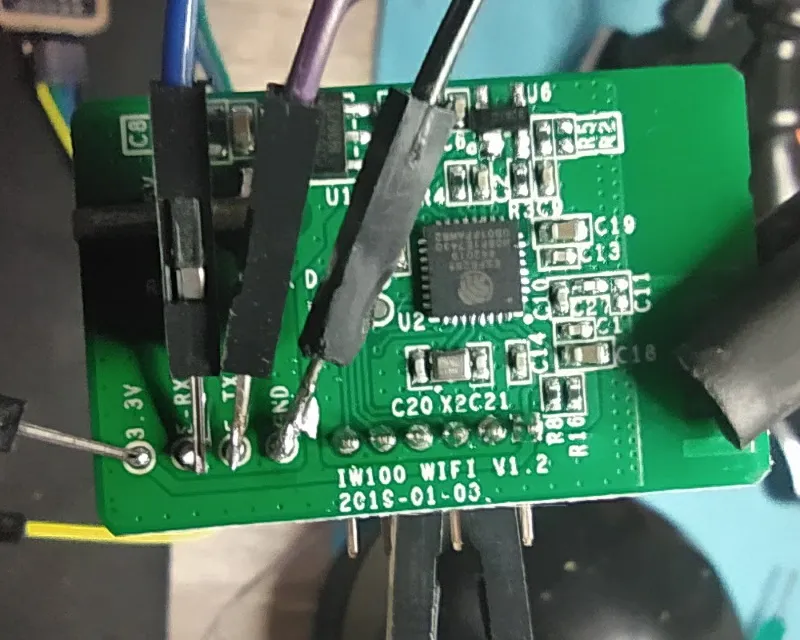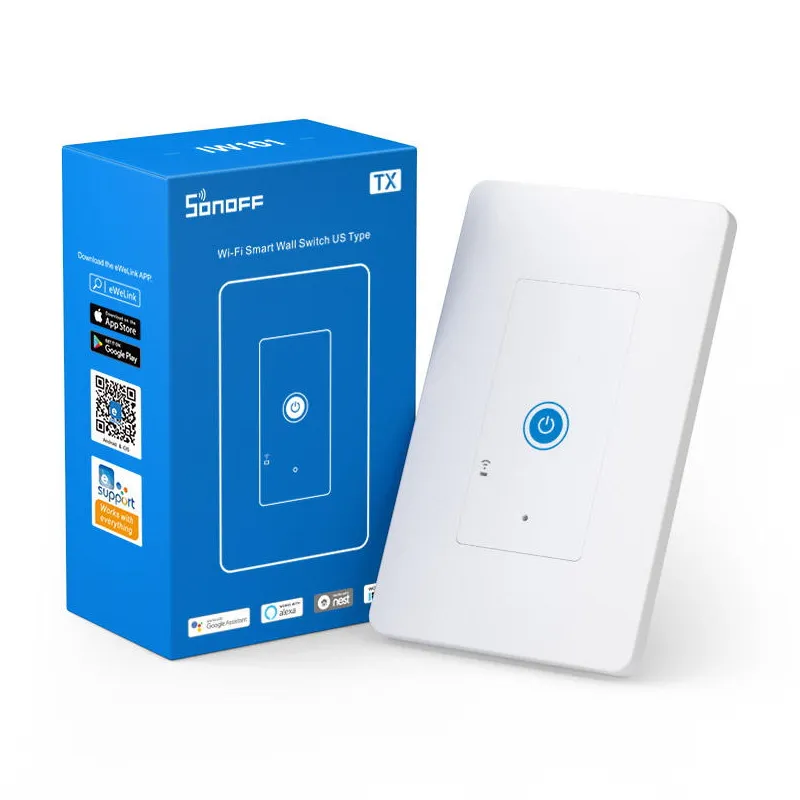
Available from:
Itead.cc
Aliexpress.com
Banggood.com
Amazon.com
Manufacturer:
Sonoff.tech
Install method:
USB to Serial
| GPIO # | Component |
|---|---|
| GPIO00 | Button1 |
| GPIO01 | CSE7766 Tx |
| GPIO02 | None |
| GPIO03 | CSE7766 Rx |
| GPIO04 | None |
| GPIO05 | None |
| GPIO09 | None |
| GPIO10 | None |
| GPIO12 | Relay1 |
| GPIO13 | LedLink |
| GPIO14 | None |
| GPIO15 | None |
| GPIO16 | None |
| FLAG | None |
{"NAME":"Sonoff IW101","GPIO":[17,145,0,146,0,0,0,0,21,157,0,0,0],"FLAG":0,"BASE":41}Use code
BLAKADDER when buying from itead.cc for a 10% discount.
I think this is the first wall switch that support power monitoring using an ESP8266. It uses a Chipsea CS7598 chip for it, similiarly to the S31. The relay is rated to 16A 250V but Sonoff states max 15A incandescent or CFL load.
The single led on the front plate serves as power and connectivity indicator.
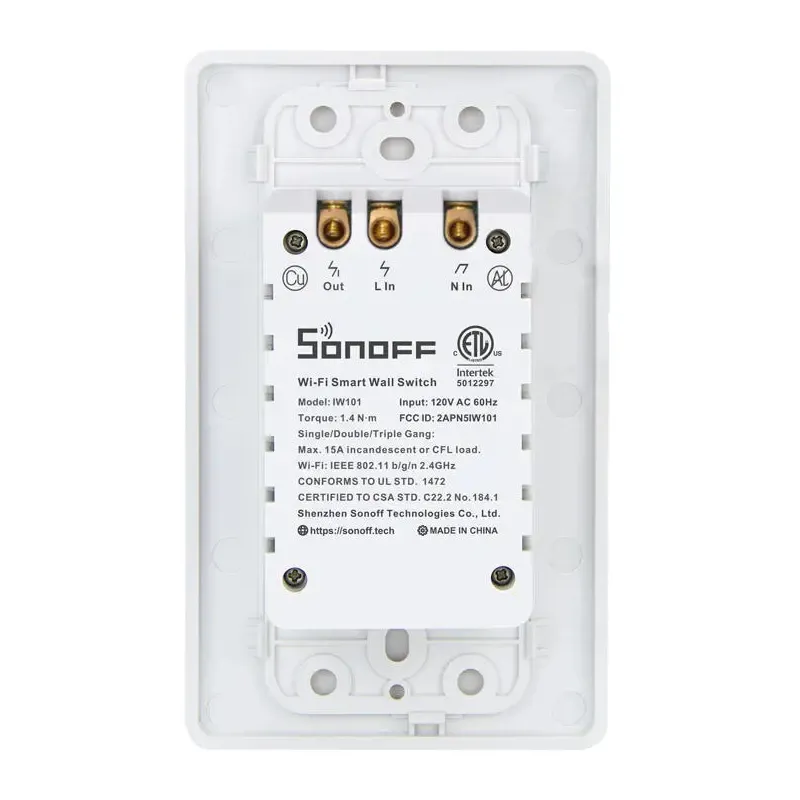
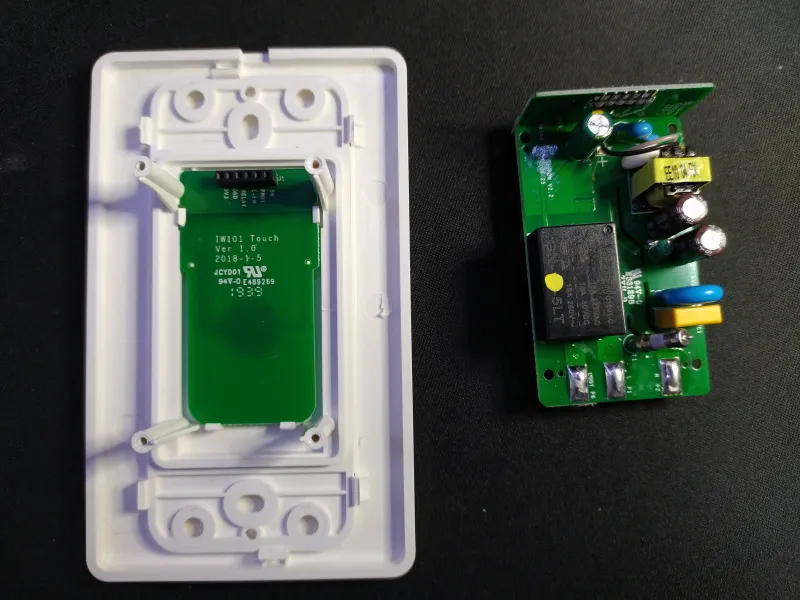
The switchplate is removable and is held on only by a few plastic clips. Access to the internals requires unscrewing 4 screws. After removing them we see the main PCB with mains electricty, a wifi daughterboard soldered on to it and the touch pad board connected with a 6 pin header.
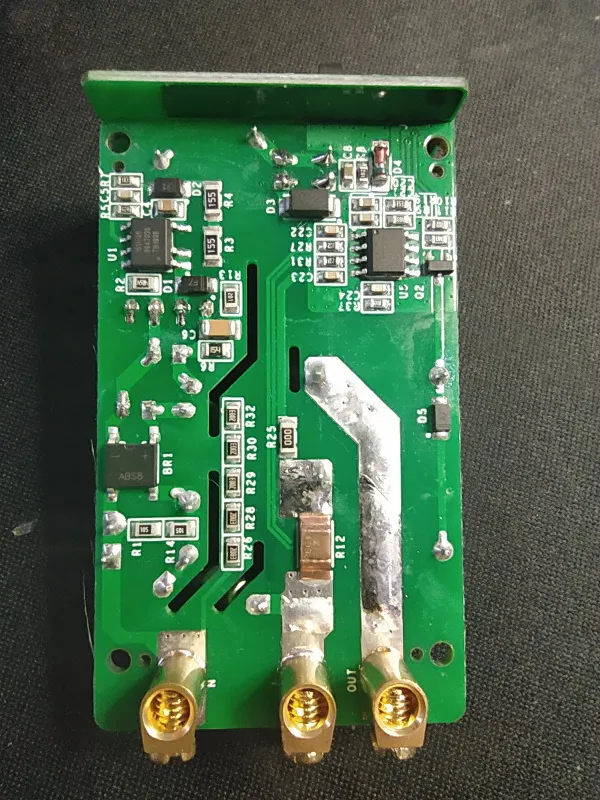
Serial Flashing
Necessary GPIO’s are neatly broken out on bottom left, albeit only on pads. To put the device into flash mode you need to ground GPIO0 using a wire to connect the two during boot (I recommend using a dupont wire on the header that connects to the switchplate). See image for pin locations.
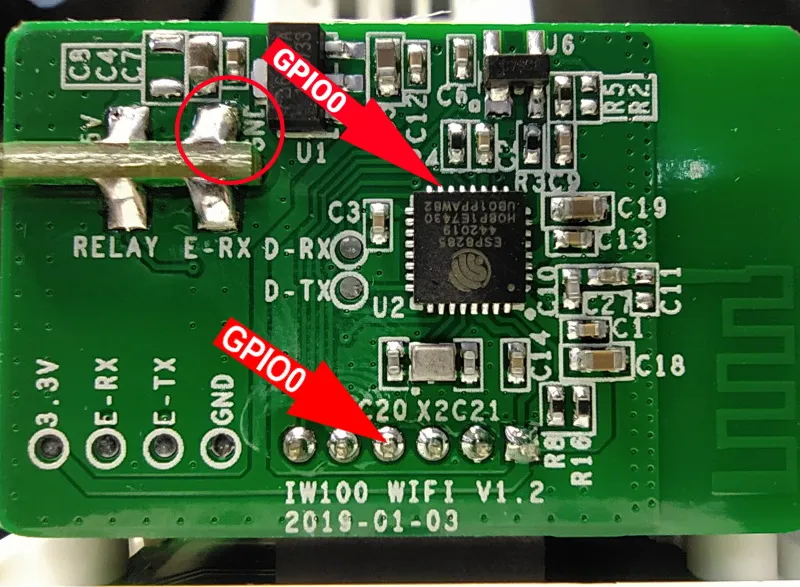
Follow the standard flashing procedure and that’s it.
